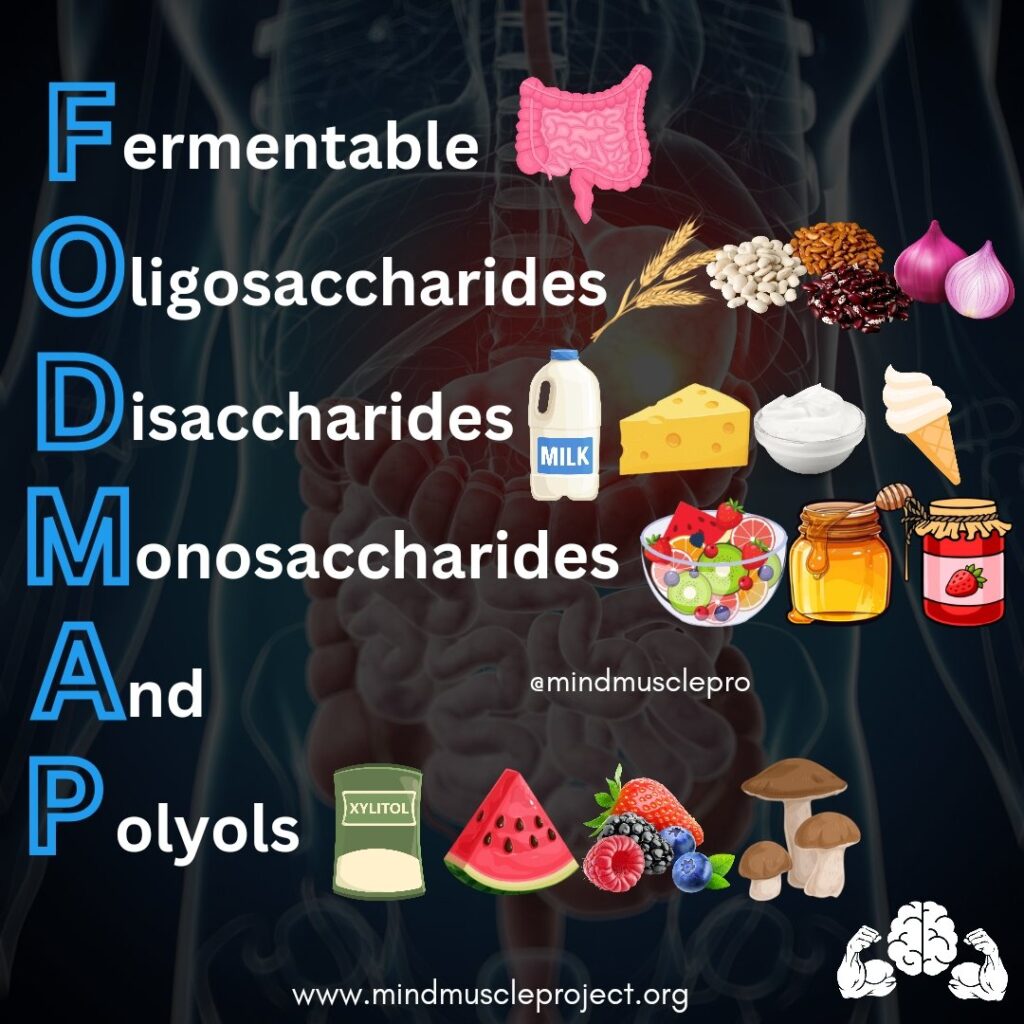The Low FODMAP Diet is a powerful dietary approach designed to address digestive issues like Small Intestinal Bacterial Overgrowth (SIBO) and Irritable Bowel Syndrome (IBS). By eliminating certain fermentable carbohydrates and reintroducing them systematically, this diet helps identify specific food triggers responsible for bloating, gas, and other discomforts.
What Does FODMAP Stand For? #
FODMAP is an acronym that represents a group of short-chain carbohydrates that are poorly absorbed in the gut:
- Fermentable
- Oligosaccharides
- Disaccharides
- Monosaccharides
- And
- Polyols
These carbohydrates ferment in the large intestine, causing symptoms in people with gut sensitivities.
1. Oligosaccharides #
Oligosaccharides are short chains of sugar molecules. They are not fully digested in the small intestine, allowing gut bacteria in the large intestine to ferment them. This fermentation often results in gas, bloating, and discomfort.
High-Oligosaccharide Foods: #
- Vegetables: Onion, Garlic, Cauliflower, Broccoli.
- Grains: Wheat, Barley.
- Legumes: Dal, Chickpeas, Rajma.
2. Disaccharides #
Disaccharides consist of two sugar molecules. The main concern in the FODMAP context is lactose, a sugar found in dairy products. People who are lactose intolerant cannot properly digest this sugar, leading to fermentation and gastric issues.
High-Lactose Foods: #
- Milk.
- Soft cheeses (e.g., cream cheese, ricotta).
- Yogurt.
- Cream and ice cream.
3. Monosaccharides #
Monosaccharides are the simplest form of carbohydrates, with fructose being the main concern in the Low FODMAP Diet. In sensitive individuals, unabsorbed fructose ferments in the gut, causing symptoms like bloating, gas, and diarrhea.
High-Fructose Foods: #
- Fruits: Mango, Banana, Apple.
- Vegetables: Beetroot.
- Sweeteners: Sugar, Honey, High-Fructose Corn Syrup (HFCS).
4. Polyols #
Polyols are sugar alcohols often found in fruits, vegetables, and artificial sweeteners. They can pass through the gut undigested, leading to fermentation and gastrointestinal discomfort.
High-Polyol Foods: #
- Fruits: Stone fruits like cherries, plums, and apples.
- Vegetables: Cauliflower, Mushrooms.
- Artificial Sweeteners: Sorbitol, Mannitol.
How Does the Low FODMAP Diet Work? #
Step 1: Elimination #
- Completely remove high-FODMAP foods from your diet for 4–6 weeks.
- This phase gives your gut a break and helps reduce symptoms of bloating, gas, and discomfort.
Step 2: Reintroduction #
- Reintroduce one group of FODMAP foods at a time (e.g., high-fructose foods).
- Start with small amounts and gradually increase.
- Monitor for symptoms such as:
- Bloating.
- Gas.
- Stomach pain.
- Diarrhea or constipation.
Step 3: Personalization #
- Based on your reactions, create a long-term eating plan that avoids your triggers while including tolerable foods.
- This phase ensures a balanced diet without unnecessary restrictions.
Why Try the Low FODMAP Diet? #
- Effective Symptom Relief: Proven to reduce symptoms in IBS and SIBO patients.
- Customized Approach: Helps identify individual triggers rather than applying a one-size-fits-all solution.
- Improved Gut Health: Reduces fermentation and gut irritation, leading to better digestive function.
Takeaway #
The Low FODMAP Diet is a systematic and individualized approach to managing gut health. By eliminating and reintroducing FODMAPs, you can identify specific food triggers and create a diet that keeps your digestive system happy and healthy.
If you struggle with persistent gut symptoms, consider giving this diet a try—it might be the solution you’ve been searching for.





